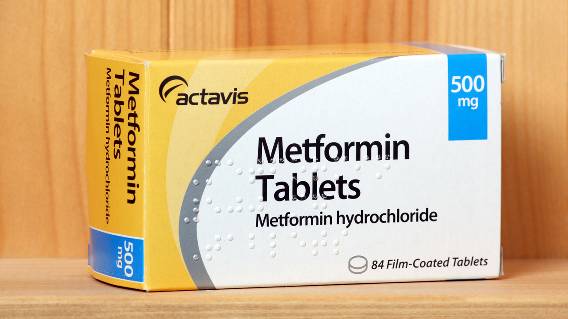Use of Diabetes Drug Metformin by Men May Increase Birth Defect Risks
Editors carefully fact-check all Drugwatch.com content for accuracy and quality.
Drugwatch.com has a stringent fact-checking process. It starts with our strict sourcing guidelines.
We only gather information from credible sources. This includes peer-reviewed medical journals, reputable media outlets, government reports, court records and interviews with qualified experts.

A popular diabetes drug being used by millions may increase the risk of birth defects in the offspring of men who take it during sperm development, according to a recent study.
Metformin, a synthetic compound used to treat Type 2 diabetes, has been used for more than 60 years, but this was the first large-scale analysis to measure its paternal impact on human birth defects.
The impact was significant.
Annals of Internal Medicine published the study, which used national registries to follow more than 1,000,000 births in Denmark between 1997 and 2016. Researchers were from University of Southern Denmark, Copenhagen University and Stanford University in California.
Use of Metformin Before Conception Increases Risks
Researchers found that metformin used by men in the three-month period before they conceived a child was linked to a 40% higher risk of birth defects in their offspring. The children were three times as likely to have a genital birth defect than those not exposed to metformin.
The study observed only children born to women without diabetes and who were under age 35. Only men under 40 who filled prescriptions for metformin during the 90 days before conception – the period when viable sperm are being made – were included.
Of the 1,451 offspring of men and women who fit the criteria, researchers found a 5.2% rate of birth defects. The rate of birth defects was 3.3% for those not exposed to metformin.
Metformin Study Preliminary but Significant
Authors stressed that the study findings were preliminary and observational, and that factors other than metformin may have influenced the results. The authors also underscored the importance of the study because tens of millions of people worldwide take metformin.
Although the drug was once used typically by older adults, its use has increased dramatically among younger men in their reproductive years because of the ongoing rise in obesity.
Metformin is a synthetic compound taken orally that lowers blood sugar by boosting insulin sensitivity.
No effect was seen in men who took the drug outside the 90-day window of sperm production.
“It really has to do with taking it in that window when the sperm that is going to become the child is being developed,” said senior author Michael Eisenberg, a urologist at Stanford Medicine.
Authors also noted that fathers using metformin during sperm development were more likely to have girls, and not boys, when compared to the general population.
They also called for more research to determine the exact causation, and biological mechanisms, leading to the defects.
“I think that it’s a single study, so it’s hard to change clinical practice based on that,” Eisenberg said. “But for somebody considering fatherhood, this study emphasizes the importance of a father’s health on the health of the child.”